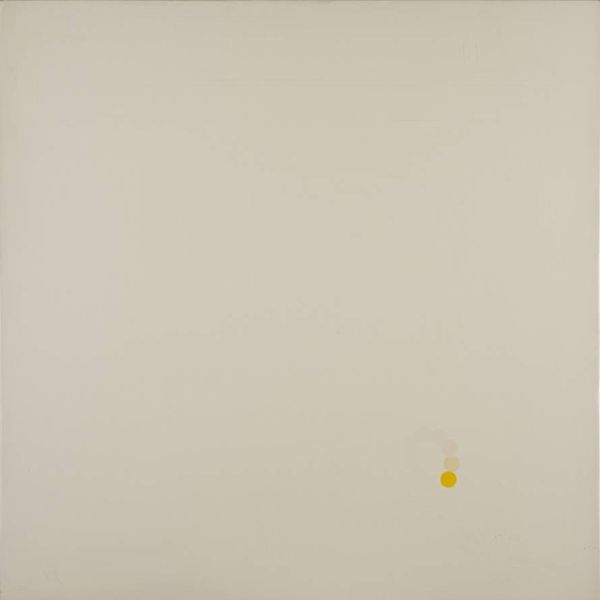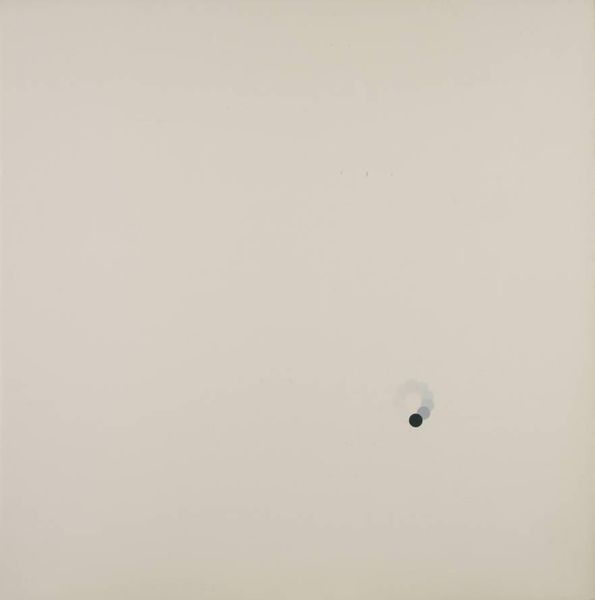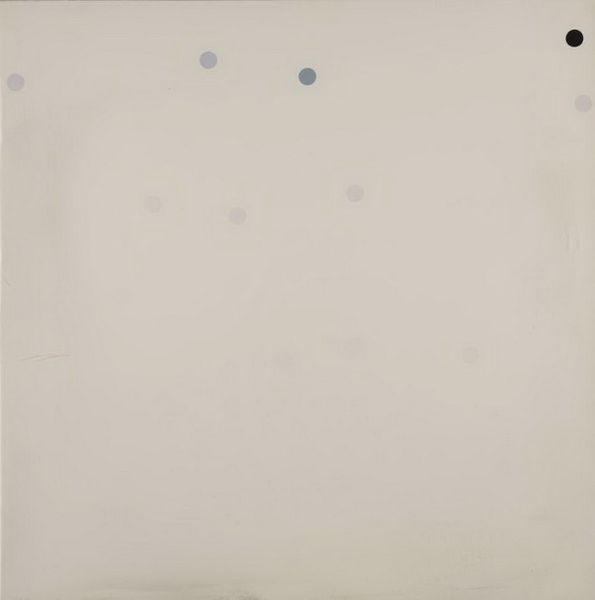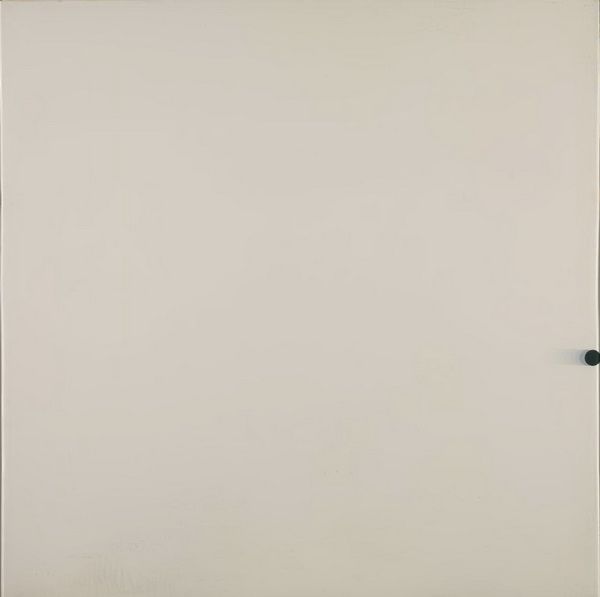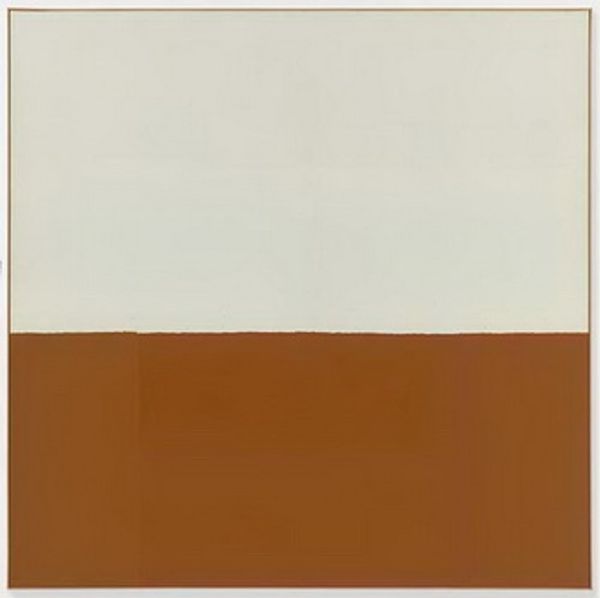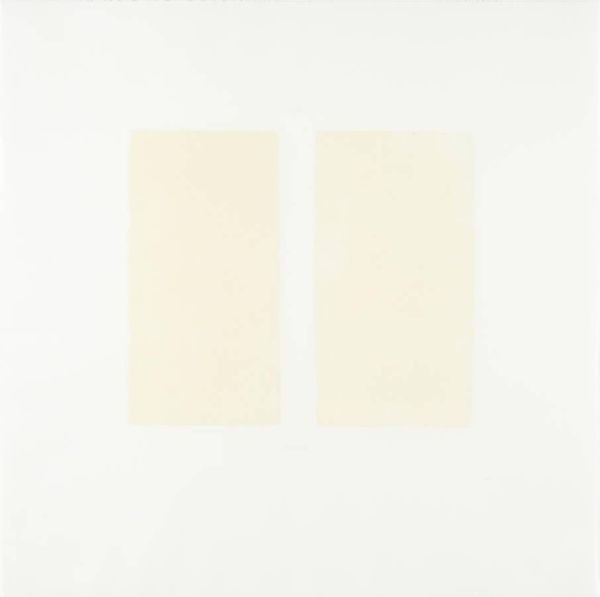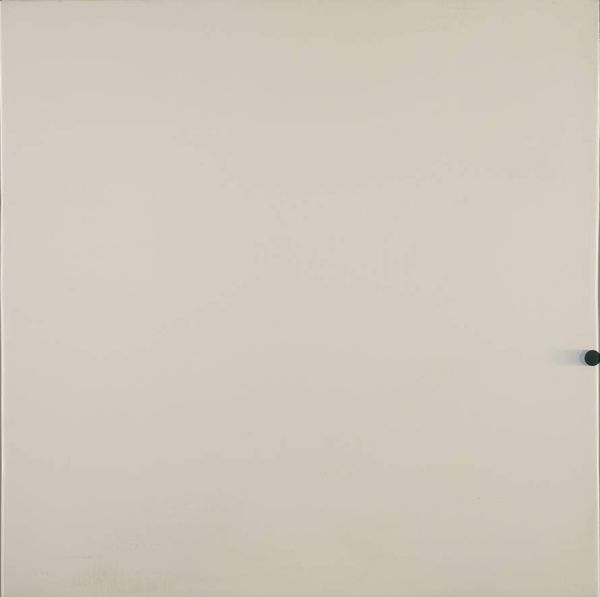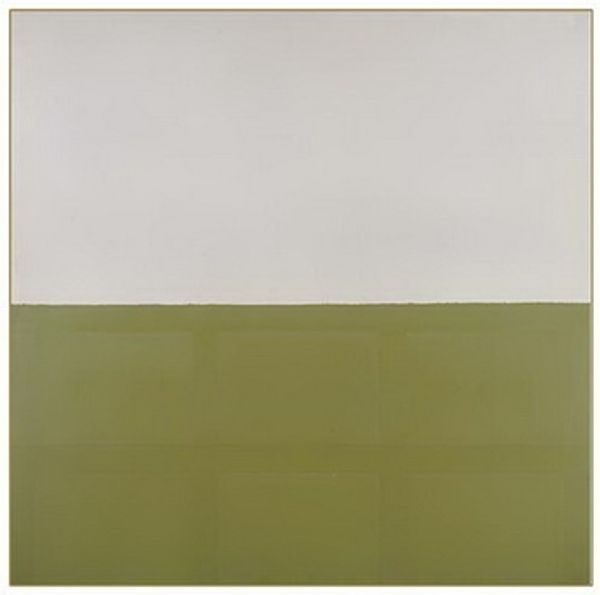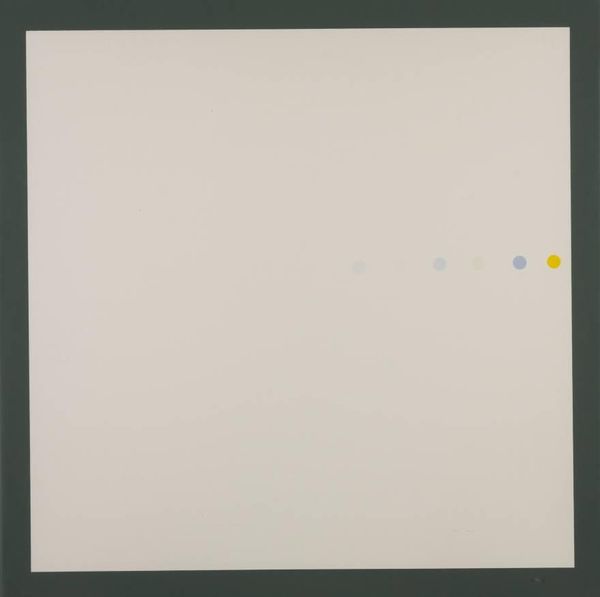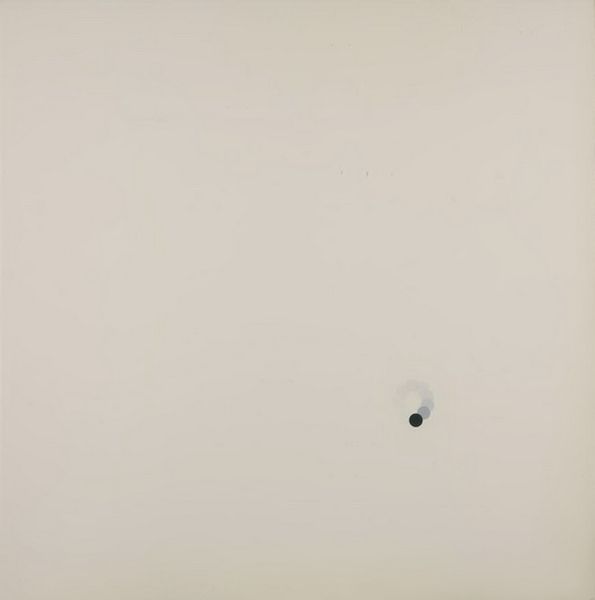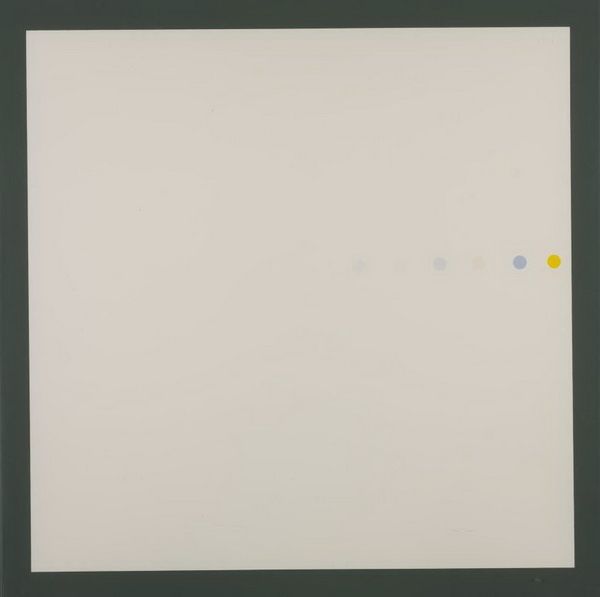
#
abstract expressionism
#
sky
#
white backdrop
#
snowscape
#
atmospheric-phenomenon
#
repetition of white
#
tonal
#
white wall
#
white focal point
#
men
#
line
#
abstract art
#
tonal art
#
watercolor
Copyright: Bernard Cohen,Fair Use
Editor: We're looking at Bernard Cohen's "Print 6" from 1967, created using watercolour. At first glance, it's strikingly minimal, almost sparse, with just a few understated marks. How would you interpret such simplicity? Curator: Ah, yes, "Print 6". It’s a whisper, isn’t it? Like a memory fading, or a thought barely formed. For me, this isn't just about simplicity; it’s about the potential within the void. Think of a musical rest, Editor, the silence that gives the notes their power. It makes me wonder, what constitutes "enough" in art? Does every canvas need to be bursting with colour and chaos? Editor: I see what you mean. The negative space almost becomes the subject itself. But is there a danger in it being too…empty? Curator: Perhaps. But isn't there beauty in emptiness too? It allows for contemplation, for the viewer to project their own experiences and meanings onto the work. What emotions rise within you as you stand before it? Does it make you uncomfortable? Editor: It's definitely a meditative experience. I’m intrigued by the subtle texture, the almost imperceptible variations in the off-white. It feels very intentional, a kind of quiet rebellion against the loud, bold art of the time. Curator: Precisely! Cohen wasn't chasing spectacle, he was exploring something far more profound – the delicate balance between presence and absence. Like trying to capture the ghost of a sunbeam. Editor: That's beautifully put. I think I’m starting to appreciate how much depth there is beneath the surface of such a seemingly simple piece. Curator: And that, my dear Editor, is often where the true magic lies: in the spaces between what is seen and what is felt.
Comments
No comments
Be the first to comment and join the conversation on the ultimate creative platform.
